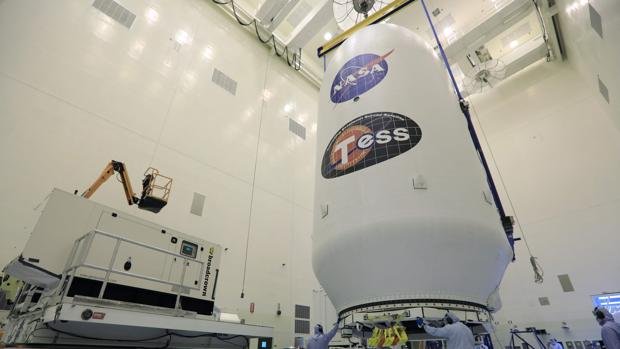TESS, a satellite launched by NASA that will look for life in 20,000 exoplanets
Tess:
The Aeronautics and Space Agency of the United States (NASA) launched today from the base of Cape Canaveral (Florida, USA) the satellite TESS, which will analyze during the next two years around 20,000 exoplanets, one of the most important missions ambitious of the American agency.
The takeoff of the Falcon 9 rocket where the satellite travels, was developed in collaboration with the Massachusetts Institute of Technology (MIT), which is valued at 337 million dollars, will observe 85% of the sky to find planets outside our solar system and, later on, to determine if the necessary conditions for life are given, occurred without problems, after the delay that the mission suffered.

There are very rare planets and galaxies in an interview with Efe Natalia Guerrero, a TESS researcher at MIT.
"We hope that TESS will help us answer if our solar system is common or unique." TESS will orbit stars located less than 300 light-years from Earth and will study an area 350 times larger than the one Kepler investigated. Space telescope that completed its task successfully in 2013.
"Now we can study individual planets and start talking about the differences between them, this is the beginning of a fantastic new era of exoplanet research," said Stephen Rinehart, a scientist at NASA's Goddard Center in Maryland (USA). He told NASA TV.
Once in orbit, the Expolanetas in Transit Satellite Survey will undergo tests and adjustments for sixty days before beginning its two-year mission.
Throughout its space mission, TESS's four 16.8-megapixel cameras will take high-resolution images that will be analyzed on Earth by experts looking for exoplanets and other astrophysical objects of interest.

Thus, the cameras will take photographs of the same sector for 27 consecutive days, to then adjust their orientation and spend the same number of days observing the next portion of the sky to study, and so on. During this period, TESS will control the brightness of each visible star in the four cameras every 30 minutes.
Fifteen thousand stars in each sector, selected before their launch as main candidates to house exoplanets, will be monitored every two minutes.
In total, it will take a year to collect the images needed to map the 13 sections of the "southern sky" and another year to examine the "northern sky," according to data from NASA itself.
To achieve its goal, TESS will measure the decrease in starlight when a planet passes in front and causes blockage. The dimension of this blockade, according to Guerrero, will help determine the size of the exoplanets and the distance to their central star.
"Thanks to the images and data collected by TESS, we can calculate if the analyzed planet in question is in the habitable zone of the orbiting star, that is, if it can have water on the surface and record an optimum temperature for life" , explained Guerrero, who has been on that mission for two years.

http://spanish.people.com.cn/n3/2018/0419/c92121-9451323.html
Great post. Have an upvote. You followed the Steemstem guideline to a tee.
If anyone is curious, I also wrote a style guide (link here) for STEM posts that you might find interesting (or not, up to you).